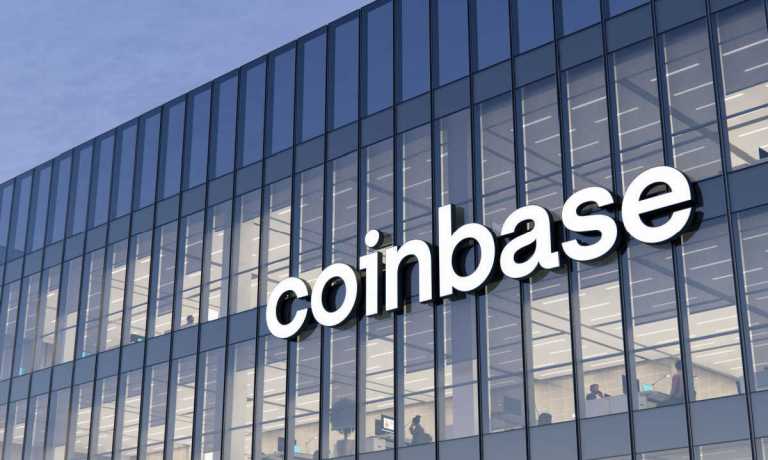Coinbase Loses Half Billion Dollars and Half Million Customers in Q3

Coinbase reported another brutal earnings miss in the third quarter of 2022, losing $545 million and missing earnings targets by a little and revenue by a lot.
The Nasdaq-listed cryptocurrency exchange has seen its revenue cut in half from Q3 2021, with the current quarter’s revenue of $590 million well below the $654 million analysts predicted, according to CNBC. Coinbase share price is down about 70% from its November 2021 all-time-high.
But user numbers, although down 500,000 to 8.5 million, dropped far less than analysts expected.
CEO Brian Armstrong repeated his previous comments that the company expects losses in down markets and plans to continue to invest through them, noting that in 2021, “we did roughly $7 billion in revenue and $4 billion of positive EBIDTA” and is shooting for a $500 million EBIDTA loss this year.
The “macro headwinds” of crypto winter and the overall state of the U.S. economy came up a lot — and could worsen CFO Alesia Haas said.
However, Coinbase’s ongoing efforts to build subscriptions and services revenue — among them is Coinbase Pay, its merchant crypto payment technology offering — remains a big focus, and one the company believes will be a lot more stable long-term than trading fees.
Those have plummeted across the industry as less price volatility in bitcoin and other cryptocurrencies since the summer as led to fewer trades — something stock and crypto trading firm Robinhood’s CEO, Vlad Tenev, said in his earnings all Wednesday (Nov. 2).
And Coinbase is restructuring in the wake of the departure of Chief Product Officer Surojit Chatterjee, who it lured from Google for a king’s ransom three years ago, with a focus on three product segments: Consumers, institutions and developers.
Other plans include increased expansion abroad, potentially acquiring companies with licenses to ease the way.
What the company does not intend to do is get into a trading fee war with companies like Robinhood, which offers zero-fee trading, and Binance, which has offered it on bitcoin. Saying that if you factor in spread versus fees, Coinbase is “roughly in line with other companies in terms of our total costs,” Haas said, “In any case, customers are willing to pay for a premium product. We are not going to compete on price because of the quality of the product.”
Looking Ahead
Asked to look five years out, Armstrong predicted that there would be “more clear regulatory environments across the G20, and really around the world, that’s going to unlock a lot more institutional capital.”
That’s not exactly a leap: The EU is on the verge of passing its Markets in Crypto Assets (MiCA) law, and several bills before the U.S. Congress focused on regulating first stablecoins and then the crypto industry more broadly are expected to be taken up early next year.
He spent a lot of time on the subject, which is hardly unexpected given how outspoken he’s been this year, pushing for the Securities and Exchange Commission (SEC) to be stripped of control of the crypto spot market over its position that virtually all cryptocurrencies except bitcoin are securities, and what he called its policy of regulation by enforcement.
Among the problems that causes is making it very difficult for non-stablecoin cryptocurrencies to be used for payments, as any transaction of any size triggers a capital gains reporting requirement.
Another prediction he made was that the crypto industry broadly will have solved the scalability problems of blockchains including bitcoin and ethereum — which hold them back from broad payments capability, among other things — through the continued progress on Ethereum 2.0 and Layer 2 solutions like the Bitcoin Lightning Network, which payments firms including Strike and Cash App maker Block have focused on this year.
“That’ll just unlock a whole bunch of new use cases,” Armstrong said. “Similar to how the internet moved from dial-up to broadband.”
And, he added, he believes more countries would begin adopting cryptocurrencies as legal tender, pointing to El Salvador’s example — despite the reality that it is largely a failure, with very few Salvadorans using it as a currency.
Then he moved on the central bank digital currencies (CBDC), suggesting that while their numbers will grow, the U.S. will not issue a digital dollar.
Stablecoin King
Instead, Armstrong said, he believes the USD Coin (USDC) stablecoin issued by Circle and Coinbase “will end up being kind of the de facto central bank digital currency in the U.S. … Policymakers in the U.S. will set the frameworks that need to be followed, and the private market will actually create the solutions.”
However, Armstrong added that while the main use of the No. 2 stablecoin is facilitating the trading of cryptocurrencies, more businesses are turning to it.
“We’re seeing some businesses make intercompany payments or B2B payments that way,” he said. “It’s just faster than sending a wire — it’ll arrive in a few seconds and with less fees than sending wires, so for easy payments, I think it’s useful. We’re seeing some people do payroll in USDC. We’re seeing venture investments happen with USDC. And then retail customers use it as funding” as well as earning yield like the 4% APR Coinbase is offering for staked USDC.
Another use, he suggested, was substituting for a U.S. bank account for people around the world who can’t access one. “Through a self-custodial wallet or something like that they can actually hold U.S dollars through USD Coin,” he said. “So, it’s applicable across a wide variety of use cases.”